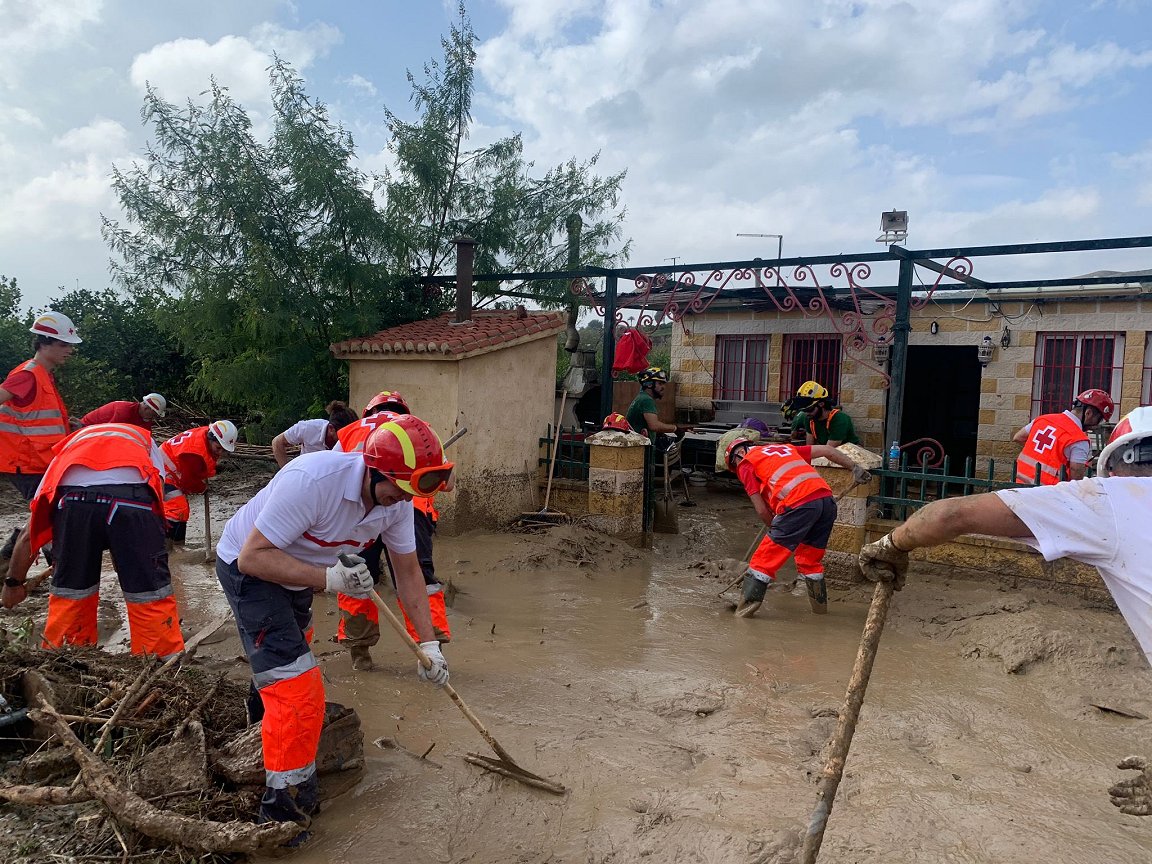
Spain: In one town in one day, nearly a year’s worth of rain

By the Climate Centre
The Spanish Red Cross this week launched a major operation to assist people affected by what have been described as possibly the deadliest floods in Spain’s recorded history.
The National Society said yesterday that many thousands of people have been affected, and it was working around the clock to provide them with safe accommodation and meet their basic needs.
Nearly 100 people were Thursday reported to have died – a toll the authorities said they feared would rise, after nearly a year’s average rain fell in a single day in one location, the Valencia town of Chiva.
The Red Cross in Valencia has set up four shelters housing more than 600 people.
Video posted on X/Twitter by the fire service in the south-eastern province, the worst-hit area, give a graphic impression of the scale and ferocity of the flash floods caused by a “DANA”.
At first glance, this modern meteorological term may have been taken for the name of a storm; in fact, it is a Spanish acronym that stands for depresion aislada en niveles altos – or a high-altitude isolated depression.
The innocent-sounding but deadly phenomenon is one to which eastern and southern Spain are susceptible, lying between the Atlantic and the Mediterranean where warm, humid air and cold fronts collide and where mountains favour the formation of heavily-laden storm clouds – and the potentially lethal downpours they unleash.
Depresion aislada en niveles altos (DANA)
This week’s DANA was one of the three most intense storms of its kind this century in the Valencia region, Ruben del Campo, spokesperson for the Spanish weather agency, Aemet, told Reuters news agency.
“Forecasts were in line with what happened. But in an area between Utiel and Chiva, in the province of Valencia, rainfall exceeded 300 litres per square metre. In that area, storm systems formed and regenerated continuously,” he added.
In a special notice last Sunday afternoon, Aemet warned of “very strong or even torrential” rainfall lasting until yesterday in the Mediterranean coast area. “Be very careful!” the agency said.
Climate Centre science lead Liz Stephens said today: “The latest climate studies for this eastern region of Spain point to rainfall becoming less of a ‘resource’ and more of a ‘risk’.
“The area is actually growing more arid overall, but what rain does fall is more intense, increasing the risk of flash floods.”
Hannah Cloke, a professor of hydrology at the University of Reading, adds: “We’re going to see more of these flash floods in the future. This has the fingerprints of climate change on it, these terribly heavy rainfalls and these devastating floods.”
The DANA rainfall is estimated to have been 12 per cent heavier and twice as likely compared to the pre-industrial climate, World Weather Attribution scientists said in a special press release today.
Historical observations indicate one-day bursts of rain in this region are increasing with climate change, they add, findings that are “well aligned with previous attribution studies of heavy rainfall in Europe such as Storms Daniel and Boris. Similar episodes of extreme rainfall will likely become heavier and even more frequent as the climate warms.”
DANAs used to be known locally as gotas frias, or cold drops, referring to any heavy autumn rainfall in the Mediterranean.
This week’s disaster in Spain is likely to be the most lethal flood in Europe since those in Germany and other countries in 2021.
Spanish Red Cross volunteers from the Malaga branch help householders clear up after the catastrophic DANA-related floods this week. (Photo: CRE via social media)